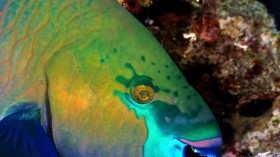Max Planck, the German physicist credited with originating quantum theory, received an unusual posthumous honor after a group of scientists named a new species of nematode after the Nobel Prize winner, who died in 1947.
The nematode was discovered by Japanese biologist Natsumi Kanzaki and his German colleague Matthias Herrmann while working in an oak forest in Japan's Fukushima prefecture. There, they collected a stag beetle that, upon closer examination, revealed to be harboring the microscopic roundworm only one millimeter long.
Pristionchus maxplancki, as the new species is called, is the first species to be named after Max Planck, though the Nobel laureate's name has lived on in a number of other ways, including the Max Planck Society for the Advancement of Science, an independent, non-profit, non-government German research organization with nearly 80 affiliated research institutes.
Determining that the new nematode was a unique species required careful microscopic observation by the international research team, which was able to distinguish the new species among others by the shape of its mouth.
The microscopic nematode lives its life as a stowaway on beetles, not harming their hosts, but simply lying in wait until the host dies, providing nutrients for the nematode and its offspring.
"Max Planck constantly emphasized the importance of exact observations and precise inspection as the actual core of scientific work. In that regard, it is also completely appropriate for a worm living in concealment, yet illuminating fundamental processes of nature to keen-eyed observers, to now be named after him," the Max Planck society wrote in a statement.
© 2024 NatureWorldNews.com All rights reserved. Do not reproduce without permission.





